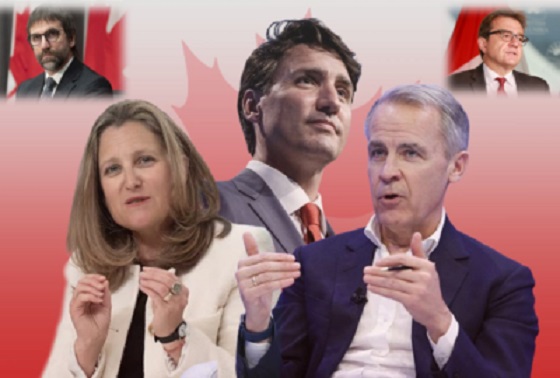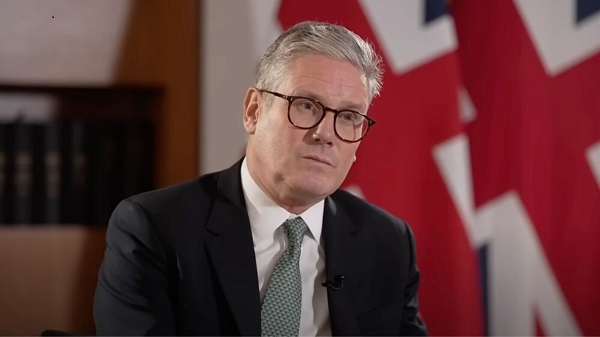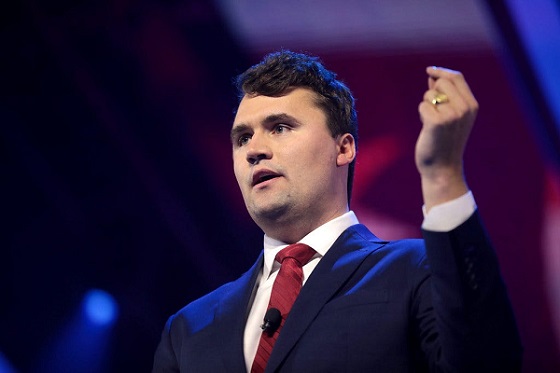Business
Homebuilding alone won’t solve Canada’s housing crisis

From the Fraser Institute
By Jake Fuss and Austin Thompson
During April’s election campaign, the Carney government promised to double the pace of homebuilding in Canada by 2035—an unlikely outcome in light of Canada’s shortage of construction workers and investment dollars. But even if homebuilding were miraculously doubled, it would not solve Canada’s housing affordability crisis.
That’s the sobering conclusion of a recent report from the Canada Mortgage and Housing Corporation (CMHC), which modelled what would happen if the rate of homebuilding between 2025 and 2035 were double what it is today. Even under this hypothetical decade-long homebuilding bonanza, average home prices would still rise by 20 per cent in Toronto (to $1.4 million) and eight per cent in Vancouver (to $1.6 million), while nationwide rents would climb by more than one-third. Housing affordability—measured as the share of income spent on housing—would gradually improve as incomes rise, but by 2035 it would only return to 2019 levels, when many renters and homebuyers were already struggling to afford a home.
The bottom line: even a decade-long surge in homebuilding—well beyond what’s realistic—would still leave many Canadians struggling to afford a home.
That’s not to say housing supply doesn’t matter. Far from it. Too few homes have been built for Canada’s growing population. If homebuilding stagnated at today’s levels, the CMHC projects that average Toronto home prices would increase by 63 per cent by 2035 (versus 20 per cent if national homebuilding doubled). In other words, failing to act would make a bad situation much worse. The federal government should use the tools at its disposal to encourage new housing—for example, cut taxes that discourage housing development, ensure federal infrastructure dollars are well spent, and encourage municipalities to approve more new housing projects.
Clearly, because any conceivable boost in homebuilding won’t, on its own, resolve the housing affordability crisis, the federal government must get serious about the other two parts of the equation: immigration policy, which drives housing demand, and economic policy, which affects the incomes of Canadians.
Canada’s population growth, which is almost entirely driven by federal immigration policy, has overwhelmed housing supply. Federal immigration targets remain historically high despite lackluster homebuilding. This imbalance contributes to rising home prices and rents. To improve housing affordability, the government must better align the number of new immigrants with the country’s capacity to build new homes. The government can also prioritize immigrants with homebuilding skills.
Housing affordability isn’t just about prices—it’s also about income. If take-home pay rises faster than house prices and rent, Canadians will get ahead. But over the past two decades, the opposite has happened—after-tax incomes have barely increased while housing costs have soared.
To help promote economic growth and substantially raise incomes for Canadian workers, the Carney government should streamline regulations and remove barriers to resource development. The government should also lower taxes on personal and business income, and reform capital gains taxes, to make Canada more attractive to investment and high-skilled workers and entrepreneurs that create jobs and opportunity. And the government should rein in spending and borrowing, which crowd out private investment and hamper the economy.
Canada must build more homes. But to help meaningfully improve housing affordability, the Carney government must also better align immigration policy with housing capacity, grow the economy and reduce taxes.
Business
Crown corporations dish out $190 million in bonuses

The federal government rubberstamped more than $190 million in bonuses to Crown corporations in 2024-25, according to government records obtained by the Canadian Taxpayers Federation.
“Bonuses are for when you do a good job, they shouldn’t be handed out like participation trophies,” said Franco Terrazzano, CTF Federal Director. “Taxpayers can’t afford to bankroll big bonus cheques each and every year for highly paid government executives.
“Here’s a crazy idea: maybe the government should stop handing out bonuses when it’s borrowing tens of billions of dollars every year.”
The records detailing Crown corporation bonuses for 2024-25 were released in response to an order paper question submitted by Conservative member of Parliament Andrew Scheer (Regina-Qu’Appelle).
Crown corporations dished out $190.3 million in bonuses for the last fiscal year, according to the records. The records break down both executive and non-executive bonuses.
The Business Development Bank of Canada issued more bonuses than any other Crown corporation, with its bureaucrats taking home more than $60 million. Every executive took a bonus, with the average executive bonus totalling $216,000, according to the records.
Several failing Crown corporations rubberstamped bonuses.
The Canada Mortgage and Housing Corporation rubberstamped $30.6 million in bonuses last year. Nearly 99 per cent of CMHC executives took a bonus, for an average executive bonus of $42,900, according to the records.
The CMHC has repeatedly claimed it’s “driven by one goal: housing affordability for all.”
In 2024, the Royal Bank of Canada said it was the “toughest time ever to afford a home.” More than 70 per cent of Canadians who do not own a home said “they have given up on ever owning” one, according to polling from Ipsos.
VIA Rail also dished out $11 million in bonuses in 2024-25. The records show 100 per cent of its executives took a bonus last year. The average bonus for VIA Rail executives is $110,000.
VIA Rail’s operating losses totaled $385 million in the most recent year, according to its latest annual report. The government bailed out VIA Rail to the tune of $1.9 billion over the last five years just to cover the train company’s operating losses.
The Canada Infrastructure Bank dished out $8.6 million in bonuses in 2024-25. The records show 83 per cent of its executives took a bonus, for an average executive bonus of $197,000.
“The CIB is not expected to reach its disbursement goals in any sector by 2027-28,” according to the Parliamentary Budget Officer.
In May 2022, the House of Commons Standing Committee on Transport, Infrastructure and Communities tabled a report with only one recommendation: “The Government of Canada abolish the Canada Infrastructure Bank.”
Multiple Crown corporations including Canada Post and the National Capital Commission, did not provide bonus records for 2024-25. Both Crown corporations said they had “nothing to report at this time.”
Federal departments and agencies have yet to provide bonus figures for 2024-25. However, the government rubberstamped more than $1.5 billion in bonuses to bureaucrats employed by federal departments and agencies between 2015 and 2023. The bonuses kept flowing despite the fact that “less than 50 per cent of [performance] targets are consistently met within the same year,” according to the PBO.
Prime Minister Mark Carney is requiring Crown corporations to propose savings of up to 15 per cent of their spending by 2028, according to media reports.
“The first thing on Carney’s chopping block should be taxpayer-funded bonuses,” Terrazzano said. “We need a culture change in Ottawa and that means the government must stop rewarding failure with taxpayers’ money.”
Table: Crown corporations with highest bonuses 2024-25
| Crown corporation | Total bonuses | Executives who got a bonus | Average executive bonus |
| Business Development Bank of Canada |
$60,742,616 |
100% |
$216,093 |
| Export Development Canada |
$45,044,281 |
79% |
$143,323 |
| Canada Mortgage and Housing Corporation |
$30,636,283 |
99% |
$42,982 |
| Royal Canadian Mint |
$12,155,211 |
N/A |
N/A |
| VIA Rail |
$11,031,412 |
100% |
$110,768 |
Business
Canadian gov’t spending on DEI programs exceeds $1 billion since 2016

From LifeSiteNews
Some departments failed to provide clear descriptions of how the taxpayer funds were used. For example, Prairies Economic Development Canada spent $190.1 million on projects related to diversity, equity and inclusion ventures but could not provide details.
Federal diversity, equity and inclusion programs have cost Canadian taxpayers more than $1 billion since 2016.
According to information published September 18 by Blacklock’s Reporter, diversity, equity and inclusion (DEI) government grants have totaled $1.049 billion since 2016, including grants for “cultural vegetables.”
A $25 million grant, one of the largest individual grants, was given to the Canadian Gay and Lesbian Chamber of Commerce to “strengthen Canada’s entrepreneurship ecosystem to be more accessible to LGBTQ small businesses.”
The government payouts were distributed among 29 departments, ranging from military to agricultural projects.
The Department of Agriculture spent $90,649 for “harvesting, processing and storage of cultural vegetables to strengthen food security in equity-deserving Black communities” in Ontario.
Some departments failed to provide clear descriptions of how the taxpayer funds were used. For example, Prairies Economic Development Canada spent $190.1 million on projects related to diversity, equity and inclusion ventures but could not provide details.
“PrairiesCan conducted a search in our grants and contributions management system using the keywords ‘equity,’ ‘diversity’ and ‘inclusion,’” the Inquiry said. “Certain projects were included where diversity, equity and inclusion were referenced but may not be the main focus of the project.”
DEI projects are presented as efforts by organizations to promote fair treatment, representation, and access to opportunities for people from varied backgrounds. However, the projects are often little more than LGBT propaganda campaigns funded by the Liberal government.
As LifeSiteNews reported, the University of British Columbia Vancouver campus posted an opening for a research chair position that essentially barred non-homosexual white men from applying for the job.
Additionally, during his short time in office, Liberal Prime Minister Mark Carney has already shown Canadians that he is a staunch supporter of the LGBT agenda after he spent over $2 million in taxpayer funding on LGBT groups during his first week in office.
Canadians have repeatedly appealed to Liberals to end pro-LGBT DEI mandates, particularly within the education system.
As LifeSiteNews previously reported, in June 2024, 40 Canadian university professors appealed to the Liberal government to abandon DEI initiatives in universities, arguing they are both ineffective and harmful to Canadians.
-

 Agriculture1 day ago
Agriculture1 day agoOttawa’s EV Gamble Just Cost Canola Farmers Billions
-

 Business2 days ago
Business2 days agoHow the feds blew your money this week
-

 Health2 days ago
Health2 days agoNearly 200,000 Albertans left an emergency room without treatment last year, finds the MEI
-

 Business21 hours ago
Business21 hours agoCanadian gov’t spending on DEI programs exceeds $1 billion since 2016
-

 Opinion1 day ago
Opinion1 day agoIt’s payback time as culture war cops switch sides, moral confusion reigns and revenge gets ready to rumble
-

 Frontier Centre for Public Policy20 hours ago
Frontier Centre for Public Policy20 hours agoCharlie Kirk Fought A Progressive Ideology That Punishes Truth
-

 Crime20 hours ago
Crime20 hours agoCharlie Kirk’s Widow Says She Forgives Her Husband’s Assassin During Memorial
-

 National8 hours ago
National8 hours agoCanada Recognizes Palestine, Allows Taiwan to Be Sidelined: A Tale of Two Standards in Ottawa’s Foreign Policy






